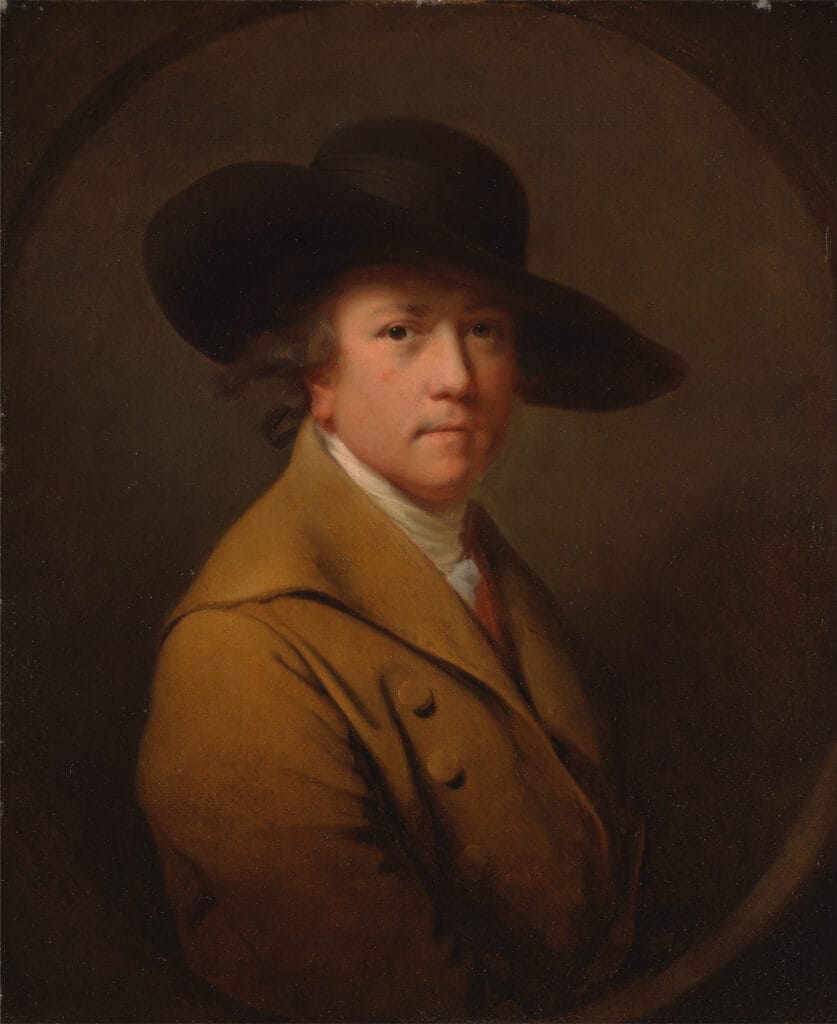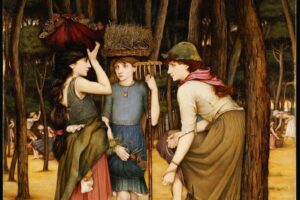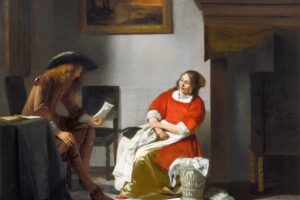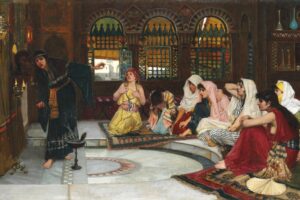A Philosopher Giving a Lecture on the Orrery
Joseph Wright of Derby, 1766 – Baroque Technique Beyond Its Time
Though created in 1766—well after the traditional Baroque era—Joseph Wright of Derby’s The Orrery adopts the movement’s most dramatic tools: intense chiaroscuro, theatrical composition, and spiritual awe. But here, the subject is not divine revelation—it is science. Light still breaks through darkness, but now it shines from a mechanical model of the solar system, a new symbol of human curiosity. It is a painting of wonder, of minds awakened, of knowledge unfolding like a sunrise.
The Scene Before Us
A group huddles around an orrery—an intricate model of the solar system. At its heart, a lamp takes the place of the sun, casting a warm golden glow that illuminates the faces of children, scholars, and noble spectators. Each person reacts in their own way: the child in awe, the man in quiet calculation, the philosopher lost in his notes. The soft fall of shadows across their garments and features makes them feel as though they are emerging from darkness into knowing.
The Deeper Meaning
Wright captures a moment in history—the Enlightenment—not through historical narrative, but through atmosphere. Instead of sacred light from above, here is knowledge radiating outward. The orrery becomes a metaphor for reason, progress, and the structure of the universe itself. The viewers are not passive; they are participants in a new understanding. The faces of the young boys pressed close to the rings suggest that wonder is no longer the realm of prophets, but of children and thinkers, sparked by simple demonstration.
A Moment Caught in Time
Despite the precision of the mechanical model, there’s nothing cold or distant in this painting. The warmth of the light, the subtle harmony of expressions, and the closeness of bodies all create a sense of intimacy. This is a shared moment—of instruction, of enchantment, of being fully alive to something vast. Baroque in spirit, Enlightenment in vision, The Orrery draws its emotional depth not from religion, but from revelation of a different kind: the steady unfolding of natural law.
About Artist

Joseph Wright of Derby was an English painter of the 18th century, well after the traditional Baroque period. However, his work, particularly his famous 1766 painting A Philosopher Giving that Lecture on the Orrery, employs techniques characteristic of the Baroque
Baroque Techniques in Wright’s Work
Wright of Derby’s work is known for its dramatic use of tenebrism, an extreme form of chiaroscuro that creates a stark contrast between light and dark. This technique, originally popularized by Baroque artists like Caravaggio, is central to Wright’s “candlelight” paintings. Instead of using light to illuminate religious or mythological scenes, Wright used it to highlight the awe and wonder of scientific discovery.
In The Orrery, a lamp placed in the center of the mechanical model of the solar system acts as a substitute for the sun, casting a powerful, almost divine glow on the faces of the figures. This lighting creates a sense of drama and intimacy, inviting the viewer to share in the “enlightenment” of the scientific moment.
Beyond Its Time: The Enlightenment
Wright’s subject matter is what truly sets him apart. He was a pioneer in depicting the spirit of the Industrial Revolution and the Age of Enlightenment. His paintings elevate scientific inquiry and intellectual gatherings to the same level of importance as the historical and religious subjects of traditional art. By applying a powerful Baroque technique to a distinctly modern subject, he created a unique style that captured the intellectual and social shifts of his time. He was a prominent member of the Lunar Society of Birmingham, a group of influential scientists and industrialists, and his works serve as a vital record of this period.
You can watch a deep dive into the painting on the National Gallery’s YouTube channel. This video from the National Gallery explores the painting’s historical and artistic significance.



